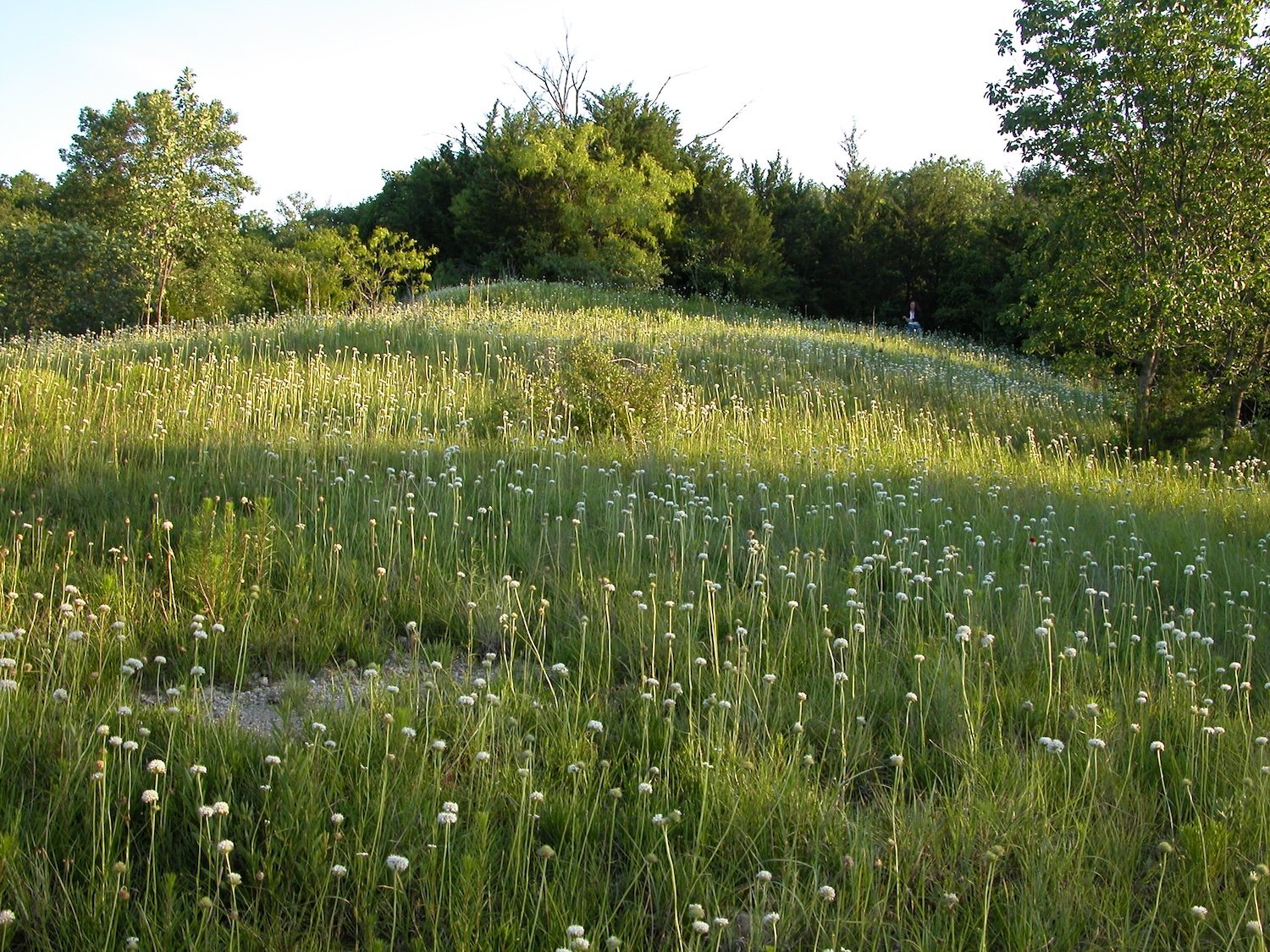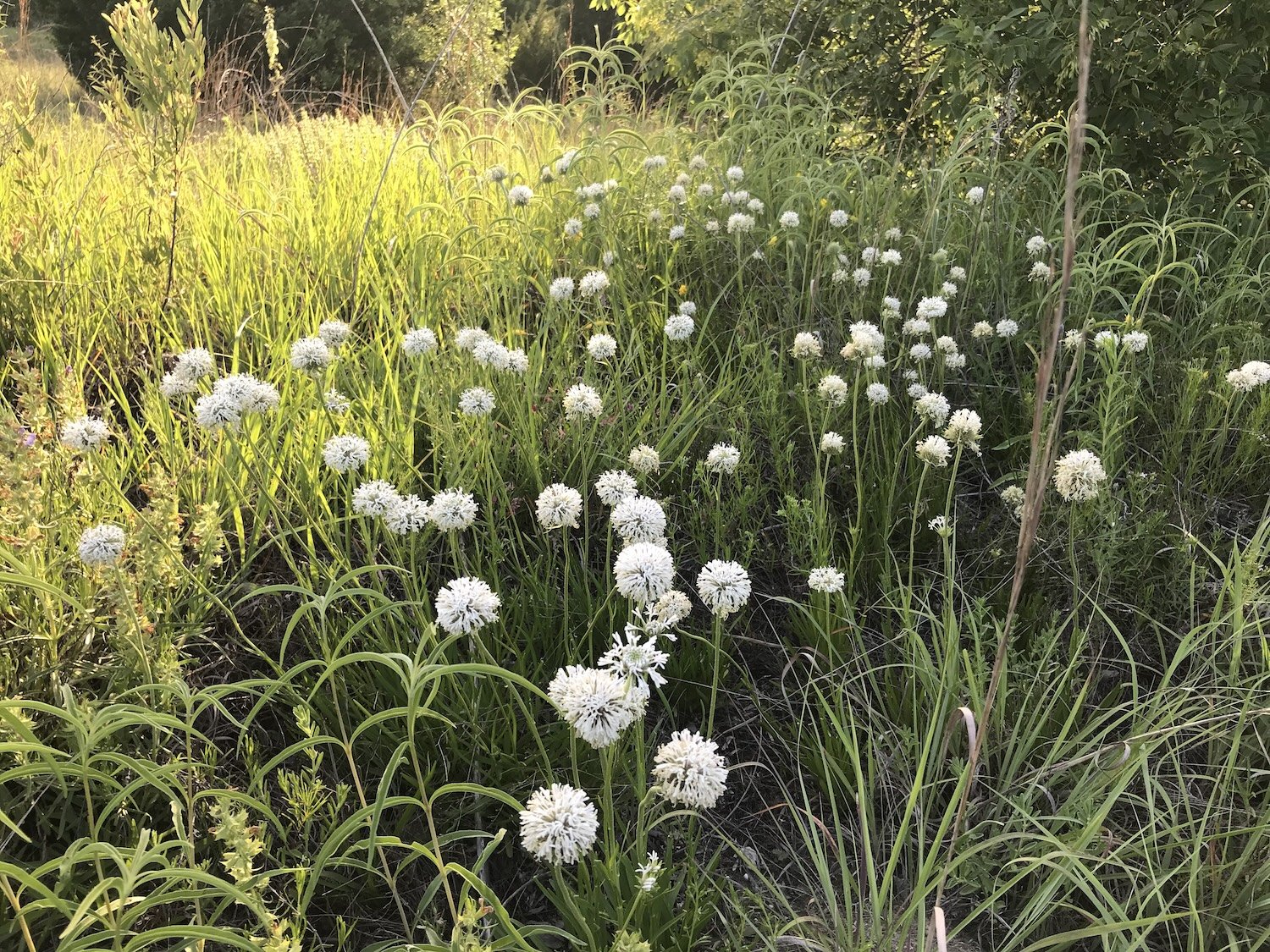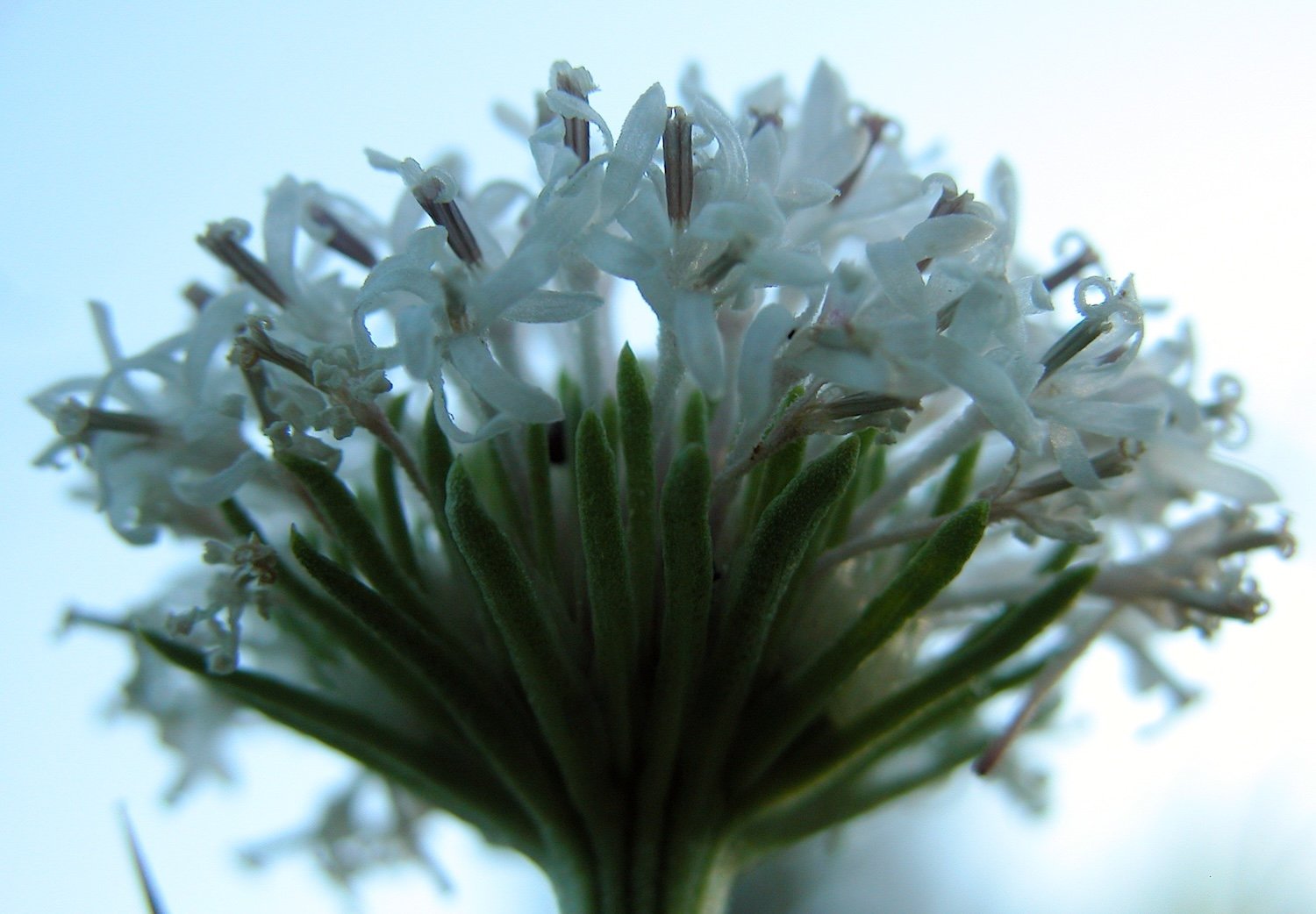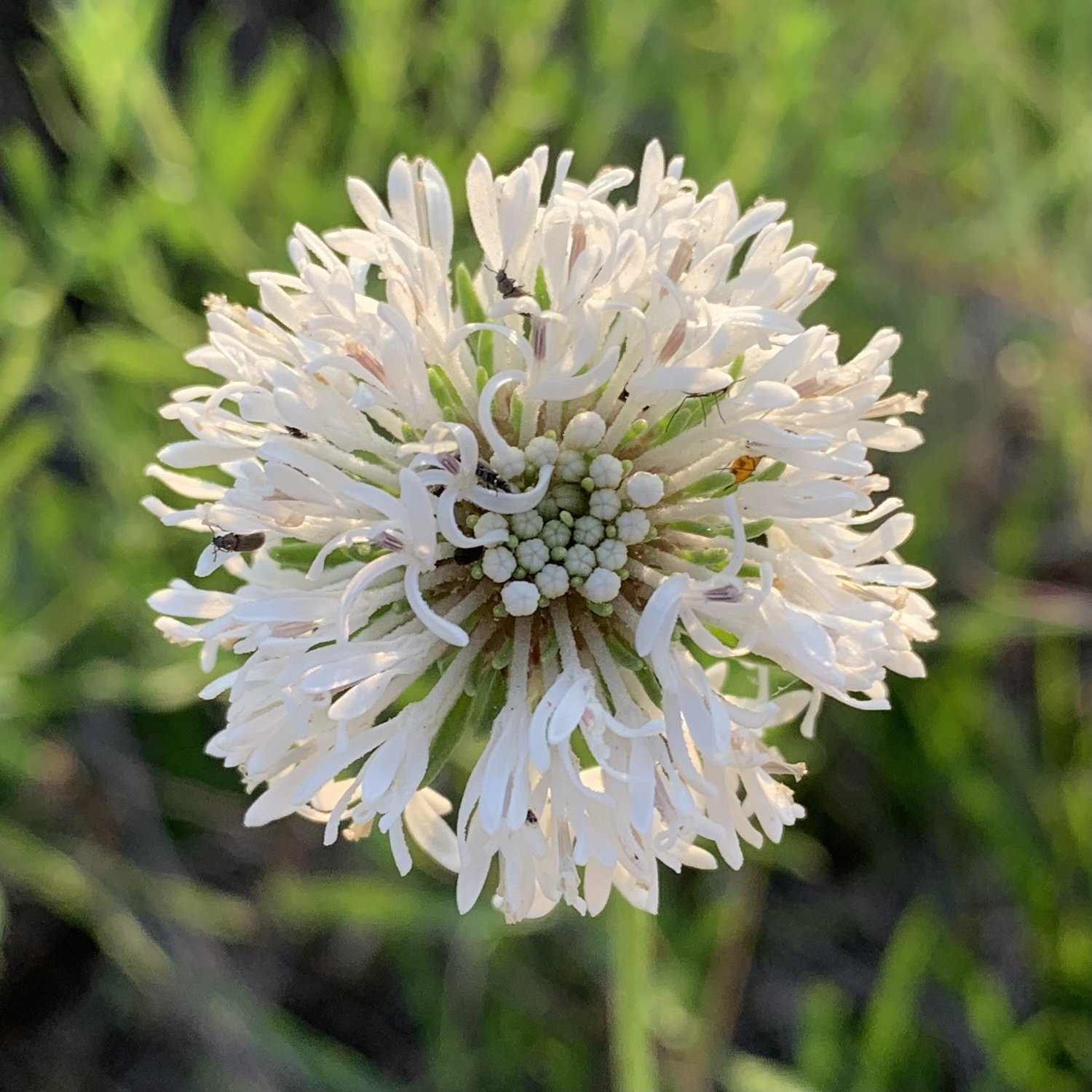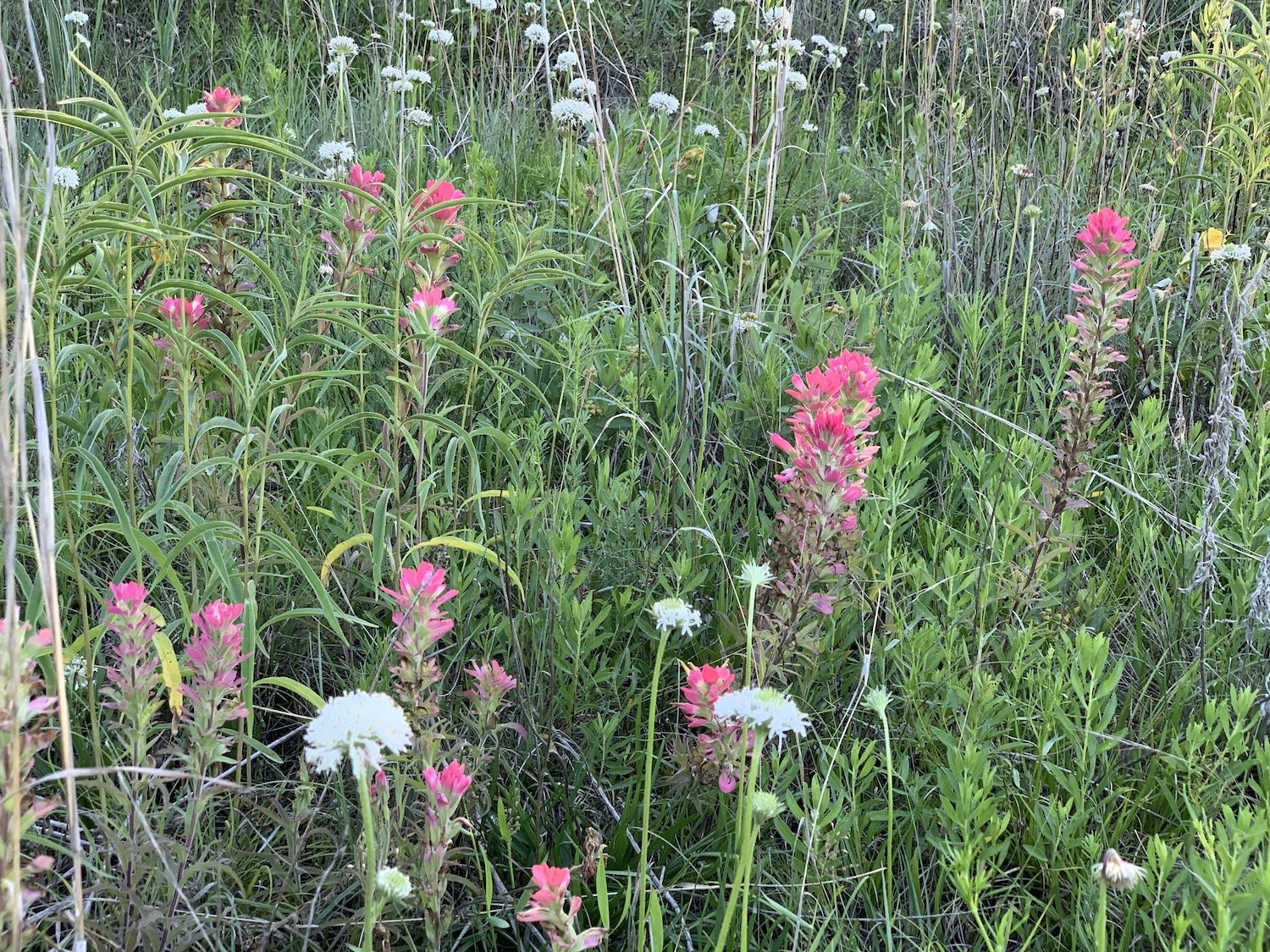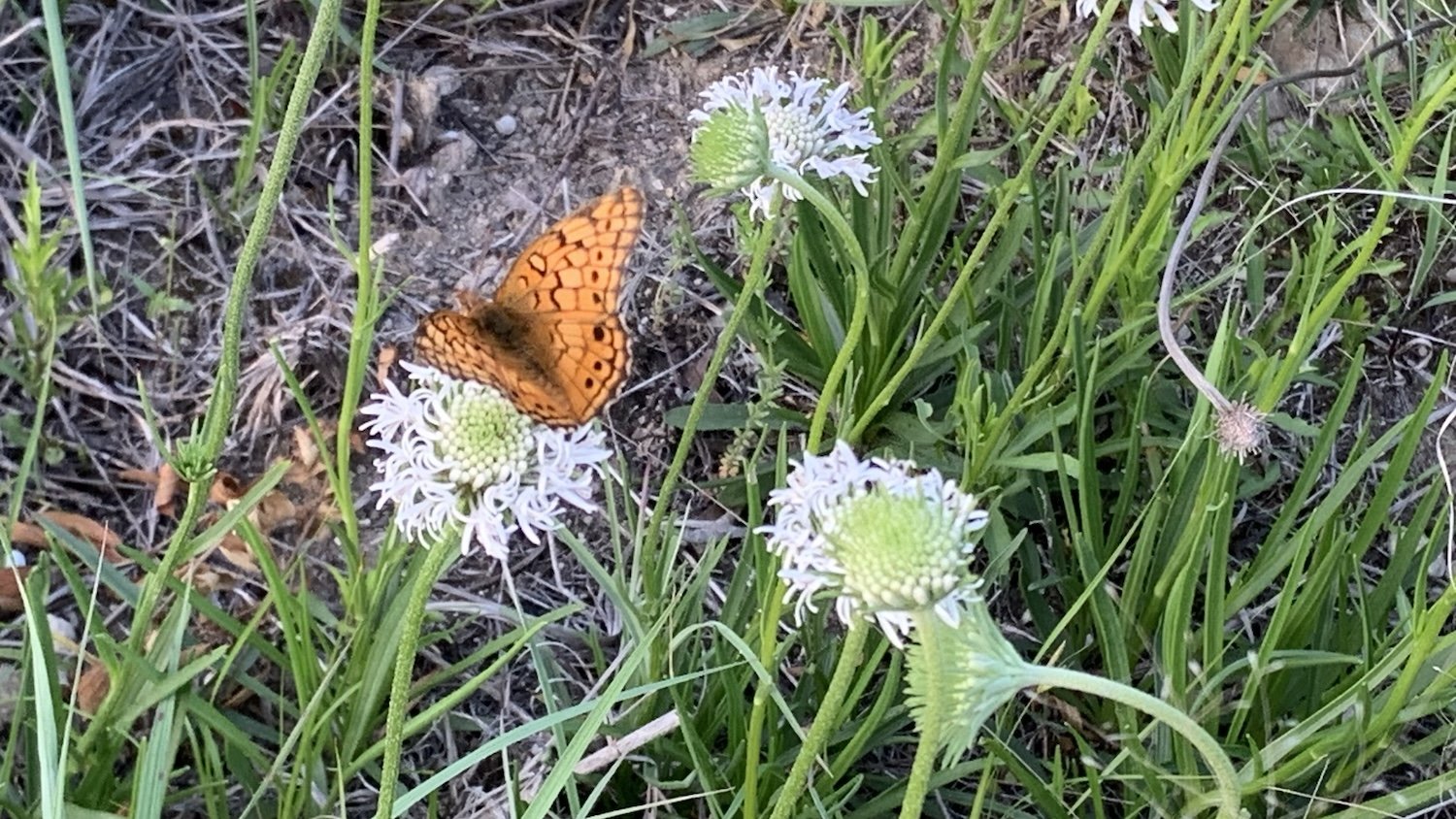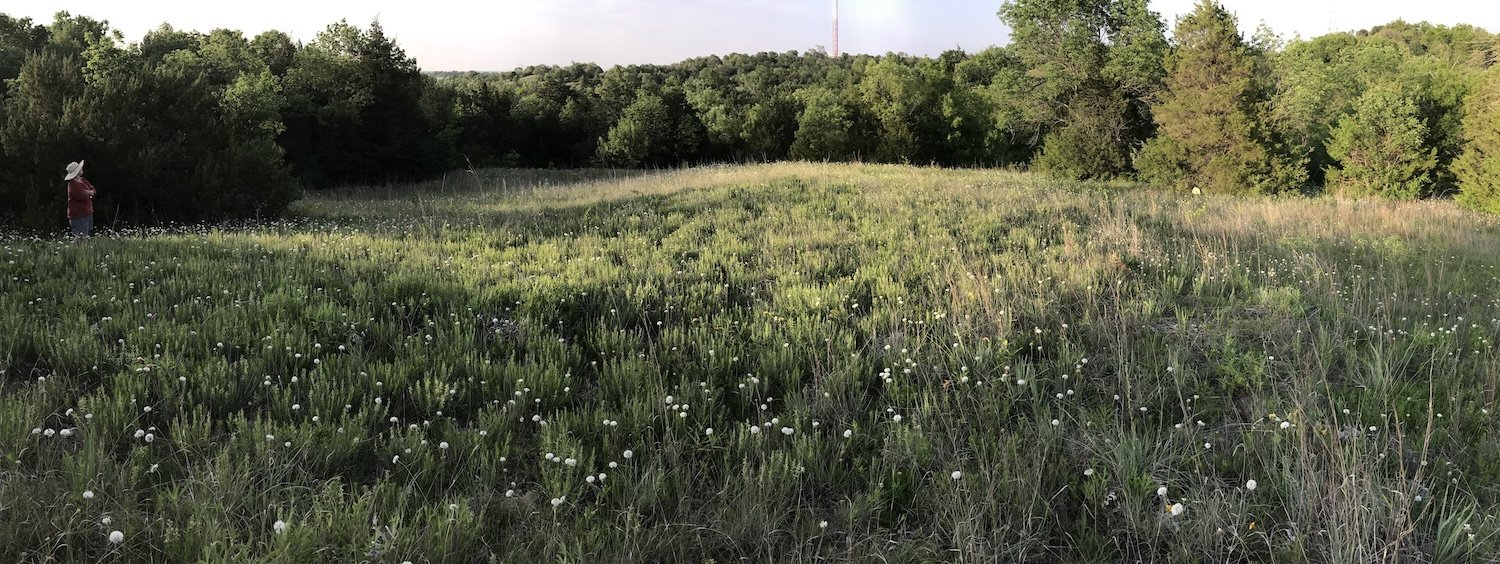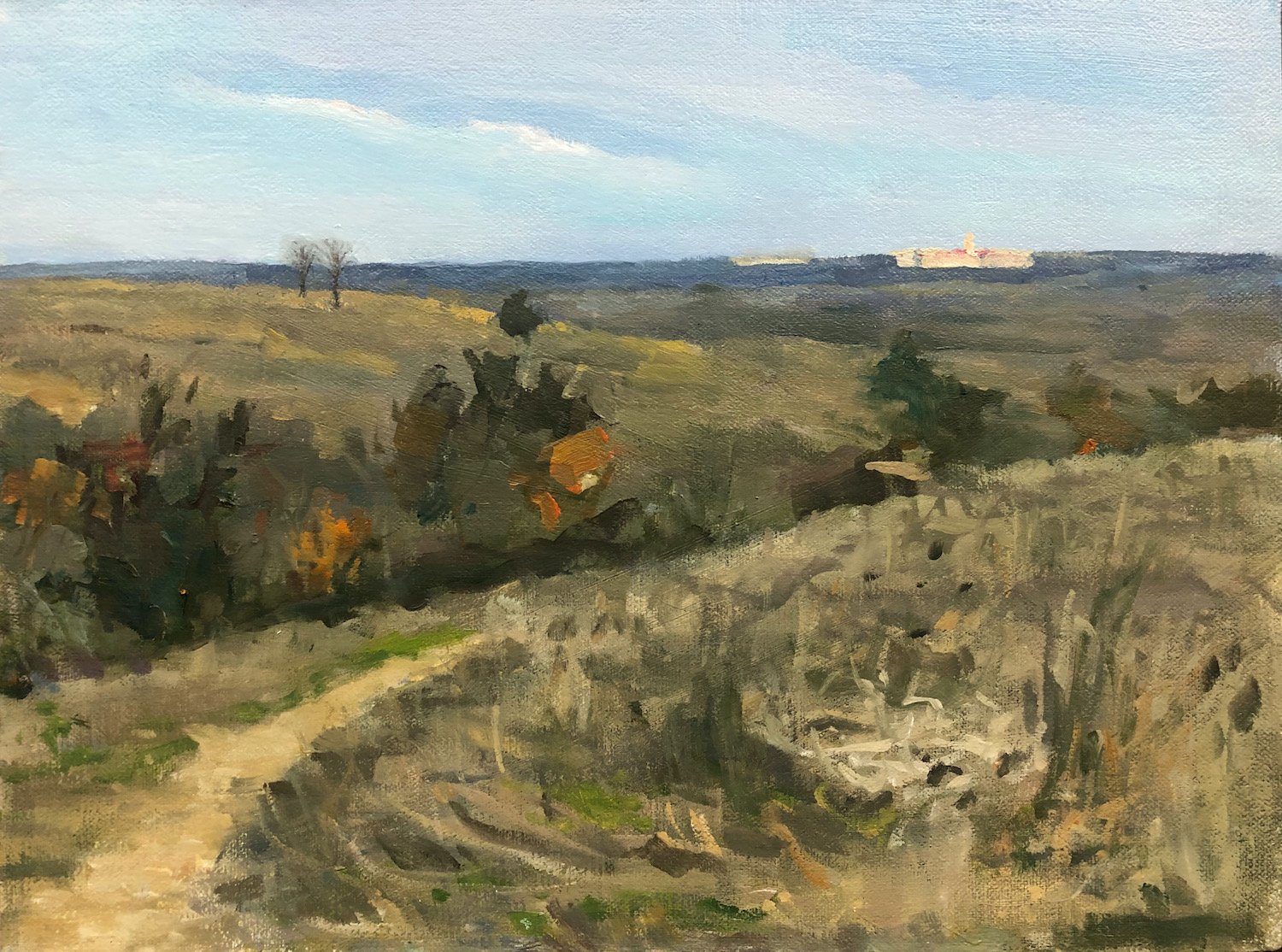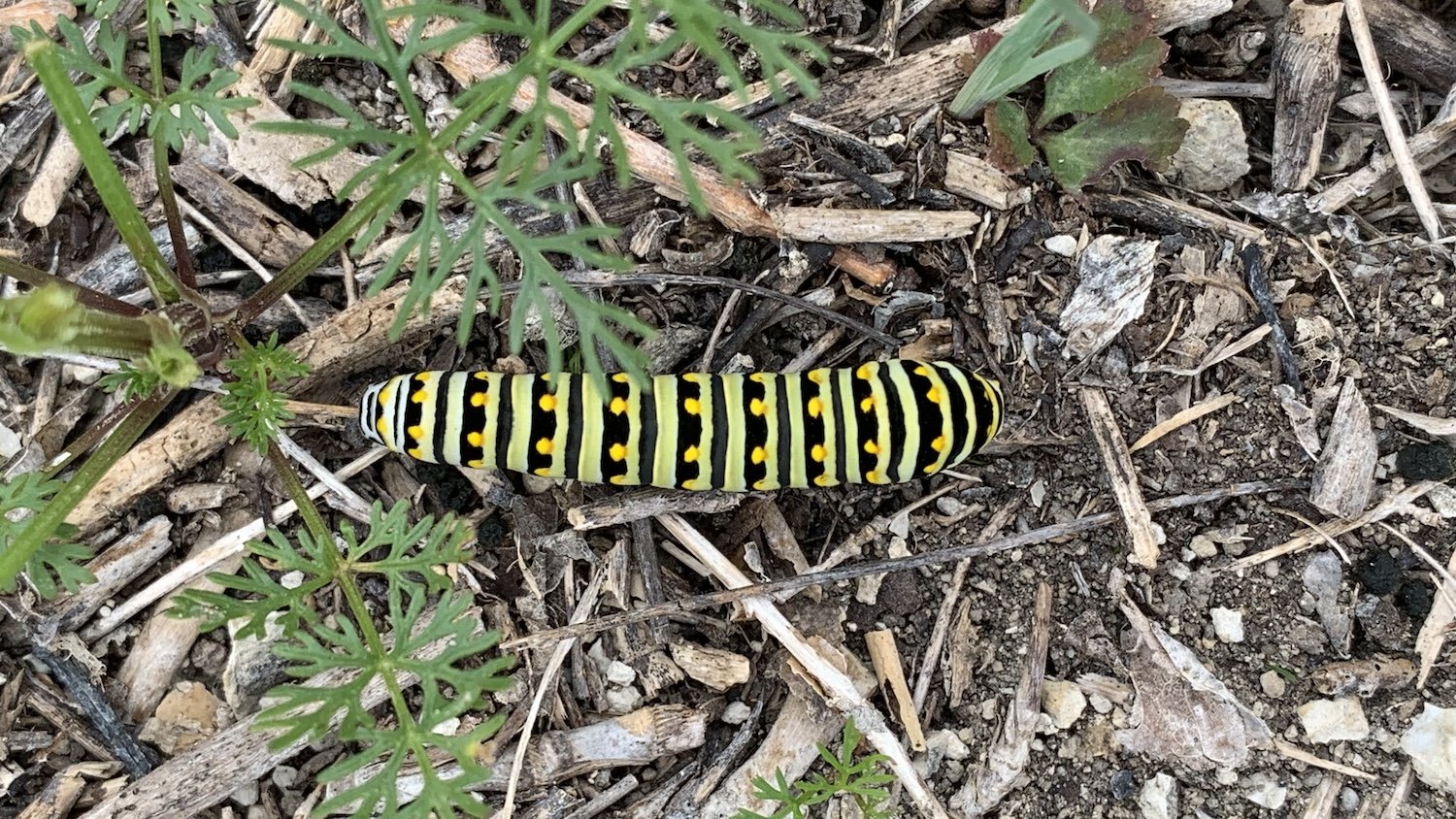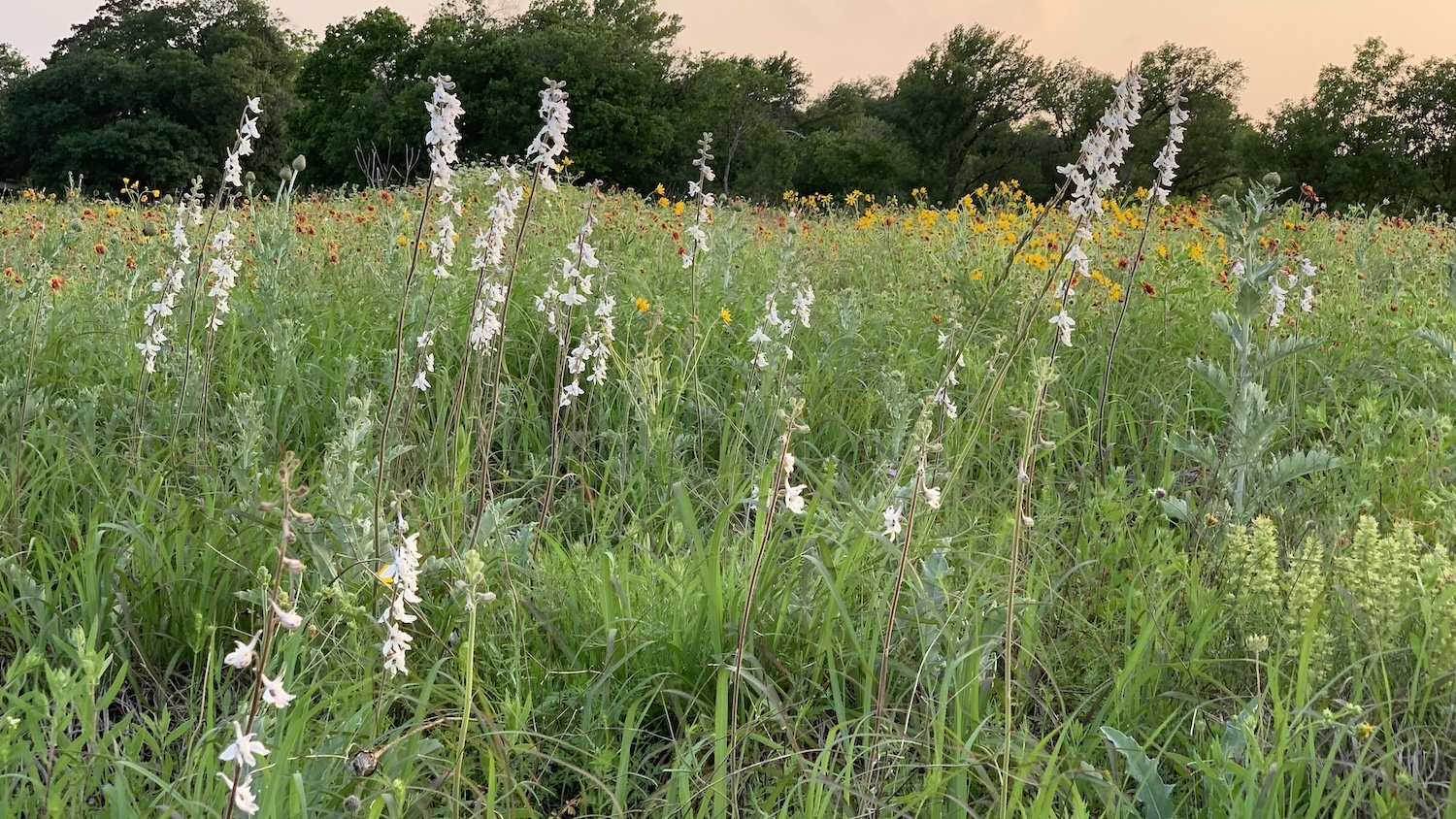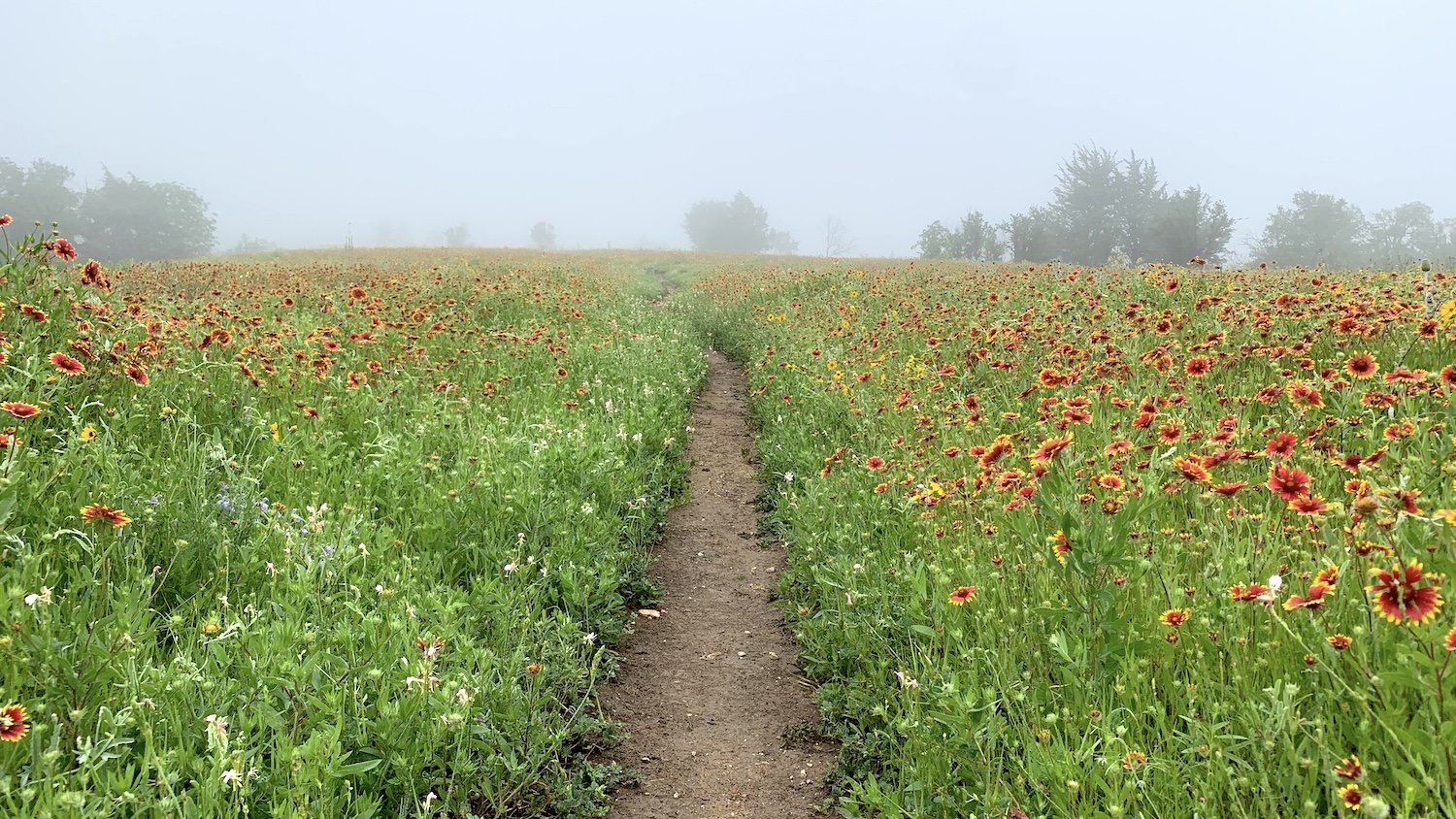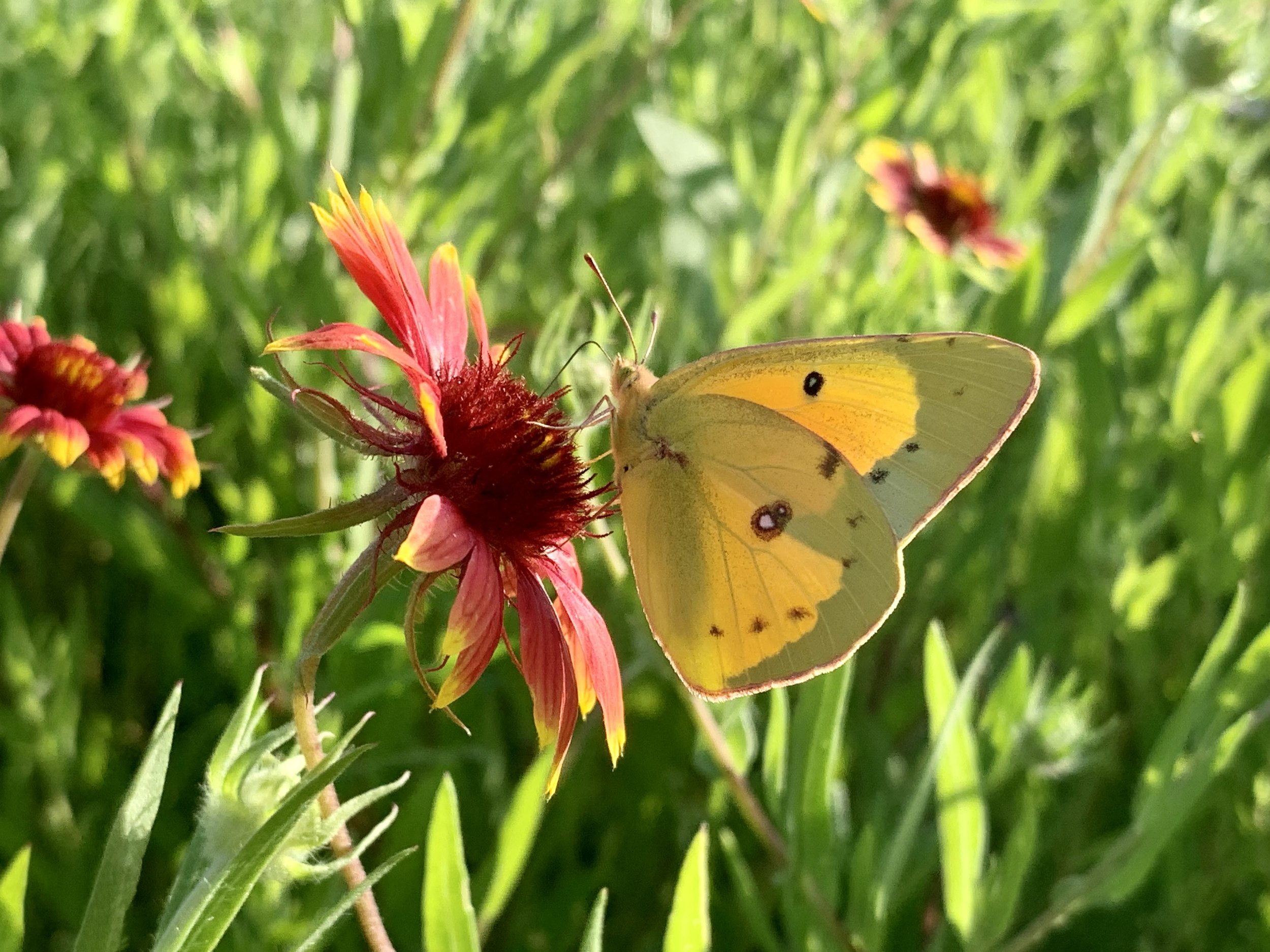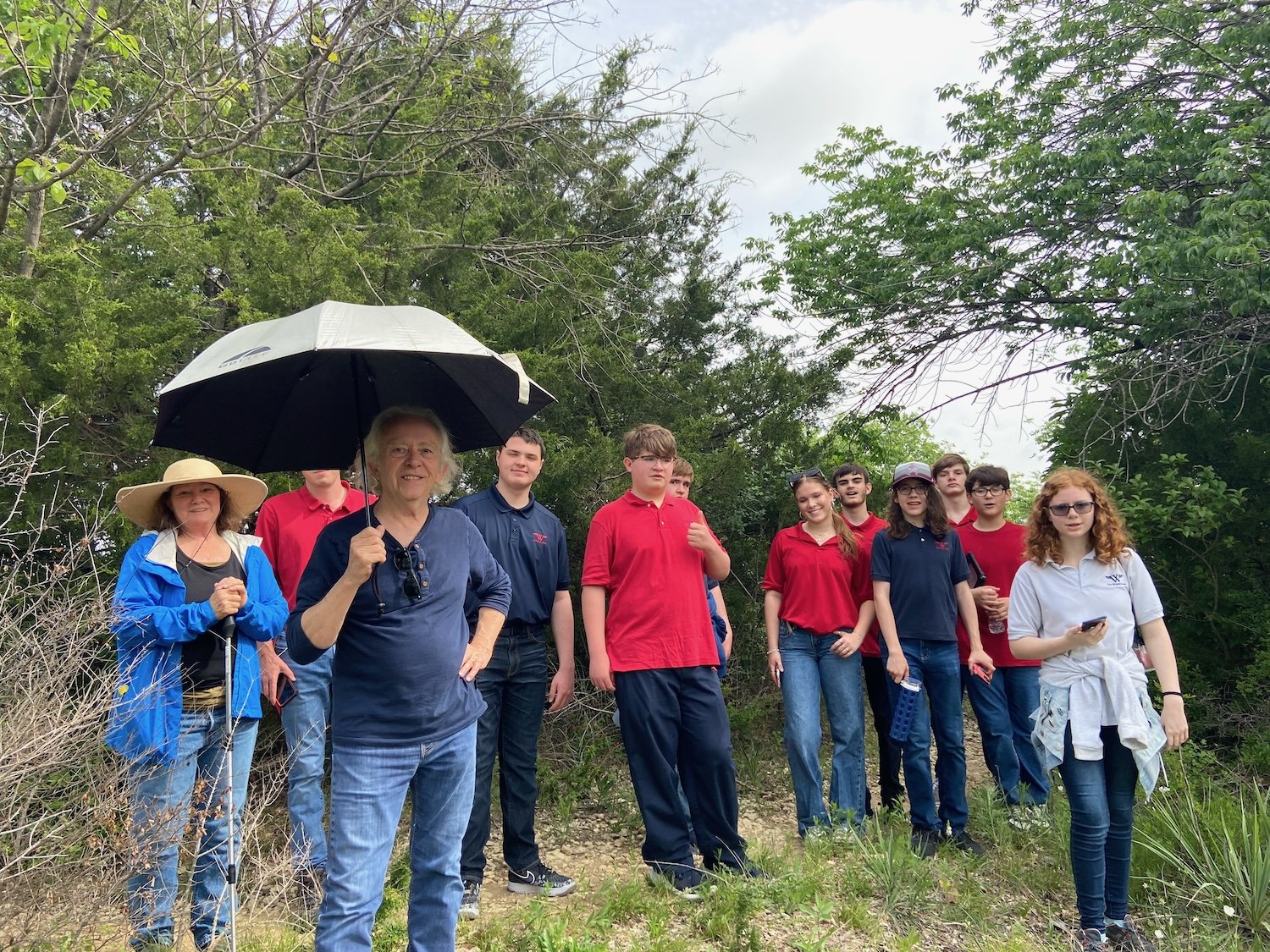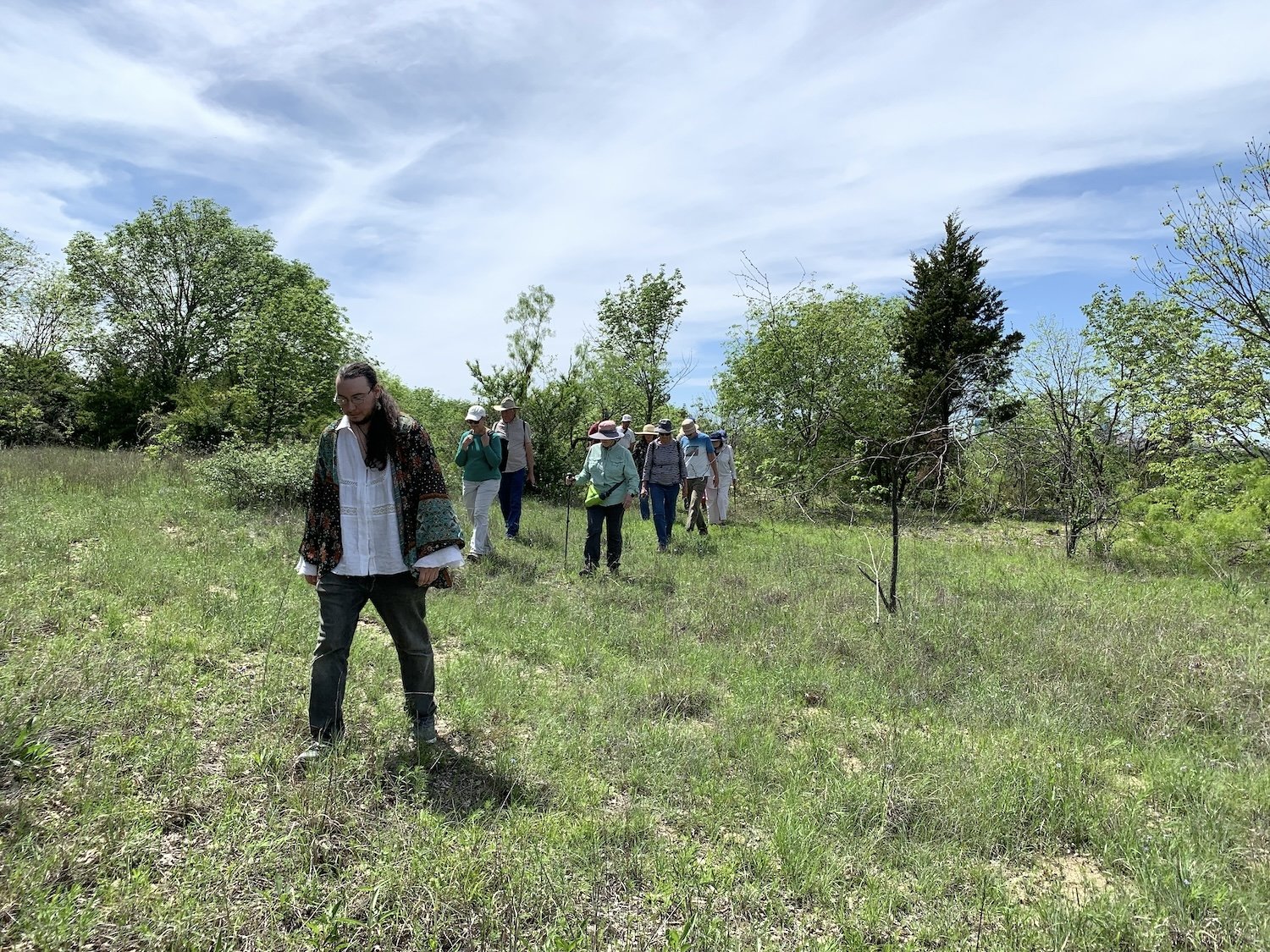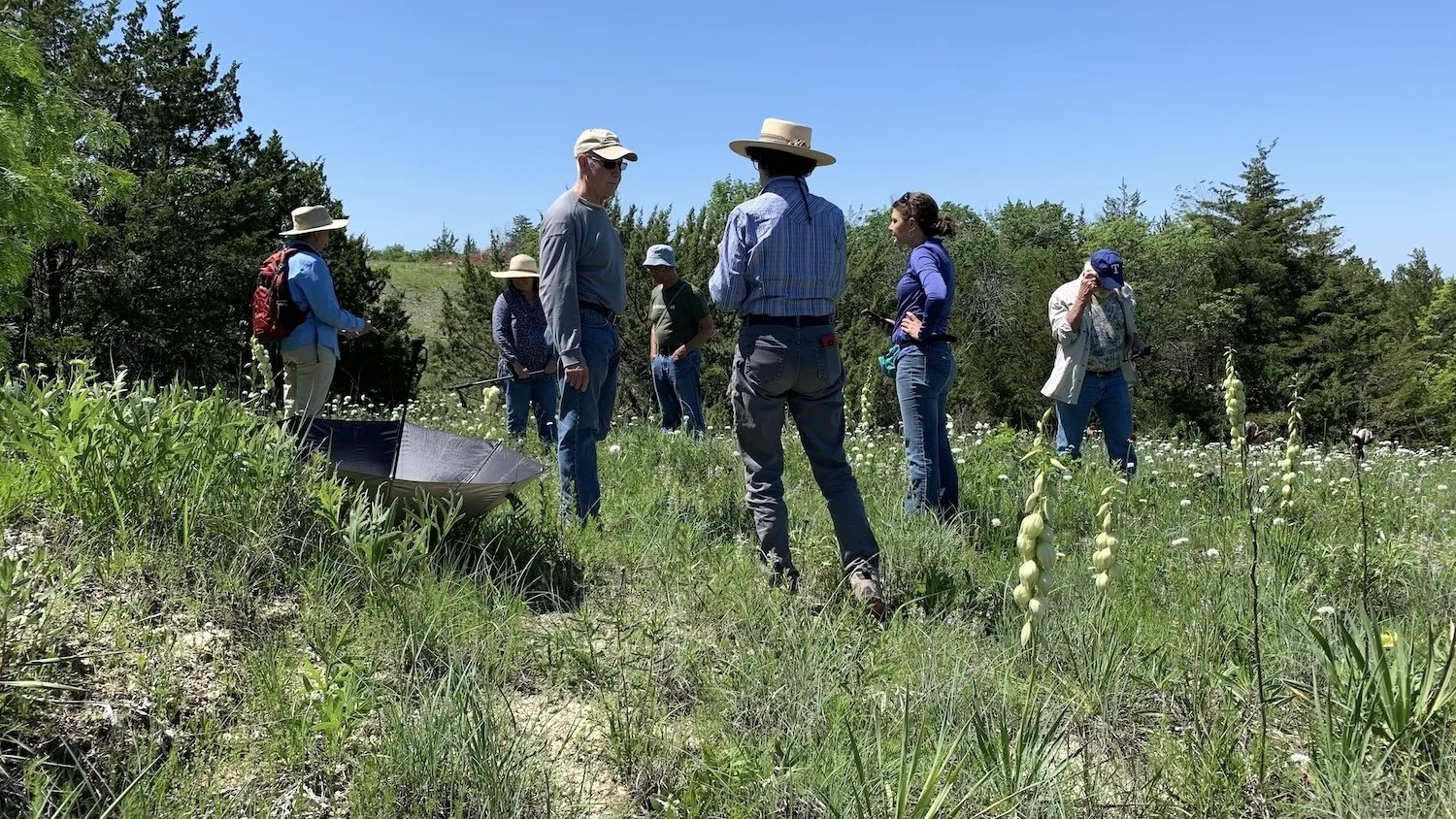Prairie Notes #209 - A TRIP TO BOUNTIFUL BB HILL
Prairie Notes are monthly photo/journal observations from Tandy Hills Natural Area by Founder/Director, Don Young. They include field reports, flora and fauna sightings, and more, mixed with a scoop of dry humor and a bit of philosophy.
They are available free to all who get on the FOTHNA email list.
A Trip to Bountiful BB Hill
Prairie Notes #209
May 1, 2024
1) A Trip to Bountiful BB Hill
2) Prairie Artist of the Month - Carol Ivey
3) Field Report - April
4) New Species Report - April
5) People On the Prairie
6) Bluebirds Take a Bow
7) PrairieSky / StarParty Report
8) Video Vistas
9) Prairie Proverb - Wangarĩ Muta Maathai
1) A Trip to Bountiful BB Hill
There are many special places hidden away at Tandy Hills. There is the, Wild Hyacinth hidden meadow; the aptly named Iconic Meadows; the Prairie Celestial colony; the Trout Lily and the Ladies Tresses Orchid patches; Moonrise Hillock; Cottonwood Overlook; Bluebell Hill, and so on. But there is no place quite like, BB Hill. It contains thousands of Barbara's Buttons (Marshallia caespitosa) wildflowers that bloom this time of year. When I say “thousands”, I am not exaggerating.
BB’s are perennials that bloom from late April to mid-May ay Tandy Hills. They grow about 12” tall and have a pleasant scent. Their color is mostly white with pink-ish accents. The flowers start out as flat but mature into rounded heads sometimes known as Puffballs. When you visit BB Hill you will have plenty of company. The many species of insects they attract keep the place buzzing.
One of the secrets to this amazing limestone outcrop is the seep that is present. A seep is a moist or wet place where water is close to the surface. A well-drained seep is exactly the conditions needed for Barbara’s Buttons to flourish in this microclimate.
Even though BB’s are the main attraction, the hill contains multitudes of other species including, Milkweeds, Paintbrush, Greenthread, Maximillian Sunflower, Primrose, Sages, Coneflowers and a robust variety of prairie grasses, depending on the season.
The Friends of Tandy Hills recognized the importance of BB Hill years ago and have been vigilant about keeping it free of invasive and woody species. Conveniently, one of our newest trails curves around the base of the hill.
On a sunny afternoon in May, it’s a jaw-dropping experience for nature mystics.
2) Prairie Artist of the Month - Carol Ivey
Carol Ivey is the artist who inspired this new monthly feature. She, and a small group of her students, have been a frequent visitors to Tandy Hills since early February this year, setting up their easels to make oil on panel sketches of the prairie as it changes season. Carol has been enthusiastic about Tandy Hills since first discovering it almost twenty years ago. Her still life paintings sometimes feature dried plant materials gleaned from her garden and from the prairie. I think you will be impressed by her works.
BIO: Fort Worth-based Carol Ivey received a BA in Studio Art from the University of Texas at Austin. Ivey has taught numerous workshops and classes and has served as juror on exhibitions across North Texas. Ivey was a finalist in the Hunting Art Prize in Houston, and has won numerous awards for her submissions in Preservation is the Art of the City, Historic Fort Worth, Inc. Her work is in many private and public collections including Fidelity Investments, Boston; Frito-Lay, Inc., Dallas; and Texas Instruments, Dallas. She has most recently shown her work with Ro2 Art, Dallas; Artspace 111, Fort Worth; and Hunt Gallery, San Antonio. Carol Ivey was awarded an artist retreat by the Morris Graves Foundation in May of 2023. Finally, Carol will be leading a painting workshop in Italy this fall. Read about that HERE: https://laromita.org/workshop/inner-and-outer-views-with-carol-ivey/
CLICK each image to view it un-cropped.
Tandy Hills Panorama, watercolor, 5 x 16 inches, 2018
3) Field Report - April
The Iconic Meadows of Tandy Hills started living up to their name in April. Engelmann's Sage (Salvia engelmannii), a signature and endemic species here, started filling in the meadows as it has for millennia. Its usual companion, Purple Paintbrush (Castilleja purpurea), did not have a very productive year and has already started to fade.
In its place, Engelmann Daisy (Engelmannia peristenia), is covering much the meadows more than usual. But, very soon, the dominant wildflower will be Indian Blanket (Indian Blanket (Gaillardia pulchella). As you recall, it had an amazing superbloom in 2023 and is on track to repeat.
You can think of those dominant species as the soloists in an orchestra, the show-offs, so to speak. But what makes Tandy Hills so incredible is, the rest of the orchestra: The dozens and dozens of other species that fill in the spaces between. It will only get better in the next few weeks. Come on in.
There is a lot to see here. Click each photo for best viewing.
The Outdoor Classroom meadow is overflowing with bio-diversity in this idyllic, mid-April view.
Scissor-tailed Flycatcher feeding off the insects that are feeding off the wildflowers, April 23rd, 2024. (See video in #8, below)
4) New Species Report - April
In a significant milestone, we blasted past 20,000 iNaturalist observations in April. Just last month we passed the 2000 species threshold. It was a young naturalist named, Sequoia Janirella Wrens, unknowingly pushed the observations past 20,000 after posting more than 100 observations on April 21st.
The species count made a big jump in April and ended up at 2052. It is bound to go up soon after the City Nature Challenge results are in next week. Here are a few of the notable new species found in April. You can check them all out on the Tandy Hills iNat Project Page HERE.
5) People On the Prairie
Tandy Hills was crawling with naturalists and nature lovers in April. The annual, City Nature Challenge, inspired lots of them to observe and document as many life forms as possible over a 4 day period ending April 30th. Don & Debora Young, led a field trip / nature hike for a dozen advance placement students from the Winston School in Dallas. The Young’s also led two special hikes for board members of the FW Chapter of Native Prairies Association of Texas and others to witness the Atlantic Camas, Prairie Celestial and Barbara’s Button colonies. Finally, City of FW Park & Rec Department installed a security barrier around one of the View Street meadows to prevent trampling during the solar eclipse. Plans are in place to install rope barriers on the other two meadows this spring. It’s not a perfect solution but will provide a temporary deterrent to certain photographers and other interlopers.
6) Bluebirds Take a Bow
Fort Worth will soon have an Official Bird. On May 14, City Council will proclaim that, the Eastern Bluebird, is the the winner. This all came about after FWISD students spent the past few months researching, documenting and studying birds to choose for the honor. After the annual science fair won by, Westcliff Elementary, an online public vote was taken. Voters chose the Bluebird from a list of six birds.
Although he is reluctant to take credit, Jim Marshall, had a lot to do with the Bluebird becoming an iconic symbol of Fort Worth. Jim has been a vital member and adviser of Friends of Tandy Hills Natural Area since 2007, the same year he founded the Bluebird Project. His dedication to both groups deserves this honor of having Bluebirds named the official bird of FW. It is also thanks to Jim that, Bluebirds have been sighted at Tandy Hills in recent years. We are so proud of him and his passion for the natural world.
Read the full story in the Fort Worth Report, HERE:
7) Prairie Sky / Star Party report
The Fort Worth Astronomical Society (FWAS) will be back on, Saturday, May 11th, 2024. Read the sky-watching commentary from FWAS rep, John McCrea, below. View the full 2024 PrairieSky / StarParty schedule HERE.
“For our May 11th FWAS/Tandy Hills star party, we will have our familiar spring constellations. The most popular can be seen in the night sky from about late March to late June. Although there are about fifteen springtime constellations visible in the Northern Hemisphere, seven prominent constellations stand out and are generally associated with springtime. These include Ursa Major, Boötes, Cancer, Leo, Coma Berenices, Virgo, and Hydra.
The sun will set at 8:18 PM on May 11th. The moon will be a 4.2-day old waxing crescent in the Constellation Gemini (the twins). There will be no visible planets tonight. Jupiter and Saturn will be in the morning sky.
With any luck we may be able to see the Ω-Centauri globular cluster. It will be 5 degrees higher than Canopus was in March. It will be at 166O compass heading (southeast) or RA 13hr 26’, Dec -47O 40’.
On this day in astronomical history:
* The Castlerigg stone circles in Aberdeenshire, Scotland, dating back to 3000 BC, have an astronomical alignment for May 1st sunrise to mark the occasion of Beltain. This was the start of summer in Great Britain. and is still Celebrated as May Day.
* “Echoes of the ancient skies” by Dr. E. C. Krupp
8) Video Vistas
9) Prairie Proverb
> Note: In 2024, all Prairie Proverbs will be from inspirational women.
“We are called to assist the Earth to heal her wounds and in the process heal our own - indeed, to embrace the whole creation in all its diversity, beauty and wonder.”
Become a member here: https://www.tandyhills.org/donate
Prairie Notes© is the official newsletter of Friends of Tandy Hills Natural Area, a 501 (c)(3) non-profit organization. All content by Don Young except where otherwise noted.



